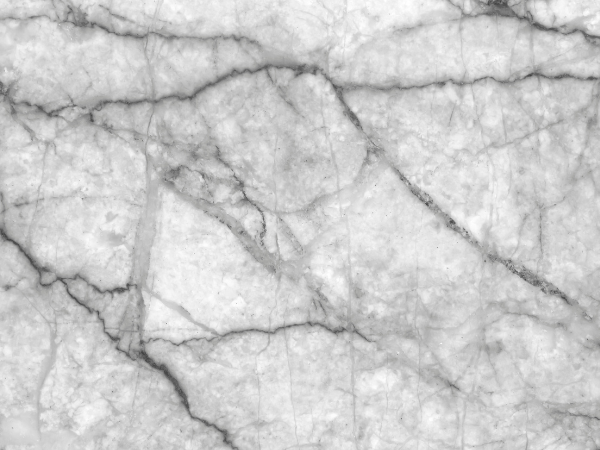
Marble is a popular choice for countertops. A natural slab of white marble with thin grey vines is a beautiful thing to look at, and each piece of marble is as unique as a person’s fingerprint. Humans have been using marble as a material for building and sculpting since early Mesopotamia.
Marble is a material we’ve been using for so long in many parts of our lives, but people often don’t know much about this fascinating stone. Here are four marble countertop facts to help change that.
1. White Marble Shows Fewer Stains
As a porous natural stone, marble requires regular treatments and upkeep to keep it looking its best, but with time, marble can begin to show its age. Scratches can occur no matter how careful you are, but certain types show fewer scratches than others.
Marble countertops, when properly sealed and treated, are more resistant to scratching, staining, and etching than other common countertop materials. However, if exposed to acid, inadequately sealed colored marble will have a white blemish or discoloration.
For kitchen countertops and high-traffic surfaces, choose a pure white marble with thinner veins because the marks left behind from acids and scratches will be far less noticeable.
2. Thanks to Other Added Trace Elements, Marble Comes in Red, White and Blue!
Speaking of colored marble, slabs of marble are available in almost every color of the rainbow, including shades of blue, black, red, grey, and of course, pure white.
Marble is a metamorphic rock, and it occurs when limestone undergoes intense pressure and heat. The marble will be pure white with few veins of grey, like a blank canvas, without any other additional elements. If trace elements occur within the limestone, then that white marble changes.
For example,
- hematite can cause red marble,
- feldspar and iron can cause pink,
- serpentine can make green.
In addition to trace elements, the mineral deposits and the amount of time the marble is trapped can also change the color of marble. Which color you choose is entirely up to you, but it is essential to remember that acids will leave white marks on the surface regardless of the marble color.
Sometimes, the ingredients necessary to make gemstones like rubies occurs in the limestone, and “marble-hosted” gems are created at the same time in marble!
3. The More Popular the Marble, the More Affordable It Is
Due to the law of supply and demand, the most popular types of marble are the most quarried and therefore the most affordable.
Carrara, Calacatta, and statuary marble are all beautiful Italian marble types, but they vary in price. Carrara is the most popular of the three and can often cost less than half the Calacatta and statuary marble price.
In addition to the type of marble and quarrying frequency influencing the overall price of the countertop, the pattern and cut of the stone and any additional finishes added during manufacturing can cause the price to rise.
Add-ons such as ornate countertop edge designs can increase the overall price and make a less expensive marble slab into an expensive-looking and beautiful centerpiece for a kitchen.
4. Marble Is More Than Just Kitchen Countertops
From statues to countertops to business cards, marble is becoming more popular as a beautiful, natural material in construction. Did you know that it is also used in the pharmaceutical industry? Marble is ground up as a high source of calcium for antacids and as an acid neutralizer in prescription medications.
In and around the home, marble countertops can occupy virtually every room and provide elegance and practicality.
In the kitchen, marble gives a sturdy surface to cook and prepare meals, while countertops in the bathroom add a delicate design over traditional porcelain.
For the outdoor kitchen space, marble can resist heat from hot pans while still providing a surface that is easy to clean up after a family cookout.
Your Countertop Could Be Marble Too.
Marble is a versatile, affordable natural stone that many homeowners have turned to for their countertops. There’s a good reason that earlier humans turned to marble for their statues and later incorporated it into more aspects of their daily lives.
How many of those marble facts did you know? Contact us today with your questions about marble countertops and how you can benefit from all of marble’s beautiful qualities.
